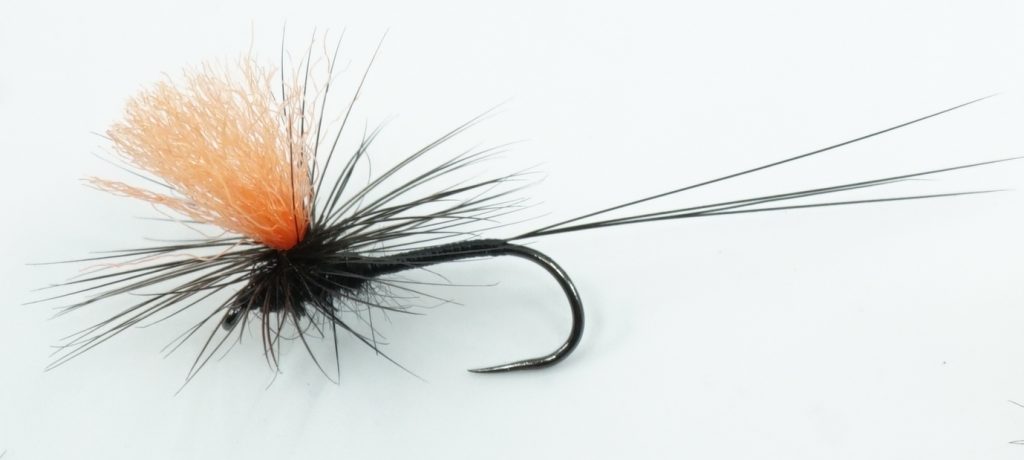Information from a CRAIG COLTMAN article.
People have expressed concern that the links to Flystream ask for signup/signin. On my phone I go straight in but I’ve discovered that my phone is routinely in “incognito” or “private” mode. Look to see how you can do it with your PC

Great for rivers and lakes.
From mid-December to mid-March, my go-to fly up here the Hi-vis Black Spinner. Spinners are particularly important on lakes as the predominant form of mayfly. Unlike lakes where dun hatches are the feature, on many waters up here, the nymphs crawl out of the water to hatch, so the dun hatch as such, is missing. As a result, the duns are less available to the trout, while the spinners become more important. Have a look for nymph shucks clinging to rocks protruding out of the water. When they are present, a black spinner pattern is always a good bet.
Usually fished in bright sun, which helps in polaroiding the fish. However, the combination of bright sun and clear water can make a standard black spinner very hard to see. To overcome this, tie with a fluorescent orange post. This spinner stands out a lot better on the water, and the trout don’t seem to mind the bright post. In fact, I sometimes think the orange makes the fly a more obvious target for them.

Releasing a black spinner feeder.
Usually fish this fly on its own. A recommendation is to use a 9ft nylon leader with a fast taper, with 1.2 metres of .18mm fluorocarbon tippet. The line loads up quickly and will punch into the wind, which is important to consider when polaroiding if you are fishing the Lakes.
It is equally effective anywhere black spinners are found.
Tying Materials
Hook – Gamakatsu S10-B, size 12
Thread – Black 8/0
Tail – Black Micro Fibets
Body – Fine fur dubbing
Post – Hi-vis orange Antron
Hackle – Black cock hackle
Tying instructions
- Tie in three to four black Micro Fibets the same length as the hook shank to make the tail.
- I put a turn of thread between the Fibets and the hook to fan out the tail.
- Next, create a smooth, slim body with the black thread.
- Then tie in post using the orange Antron.
- Tie in the black hackle, dub in a small body, and wind in three to four turns of hackle in an anti-clockwise direction to create the parachute.
- Tie off and whip finish.
- Finally, cut the post to length: approximately two-thirds the length of the hook is about right. I put the finished fly in liquid floatant and leave to dry.
It might be winter right now, but before we know it, summer will be here again and the spinners will be flying. I recommend you use the long winter evenings to tie up a good stock of this pattern in anticipation.
Keyword dryfly

People have expressed concern that the links to Flystream ask for signup/signin
On my phone I go straight in but I’ve discovered that my phone is routinely in ‘incognito’ or ‘private’ mode. Look to see how you can do it with your PC